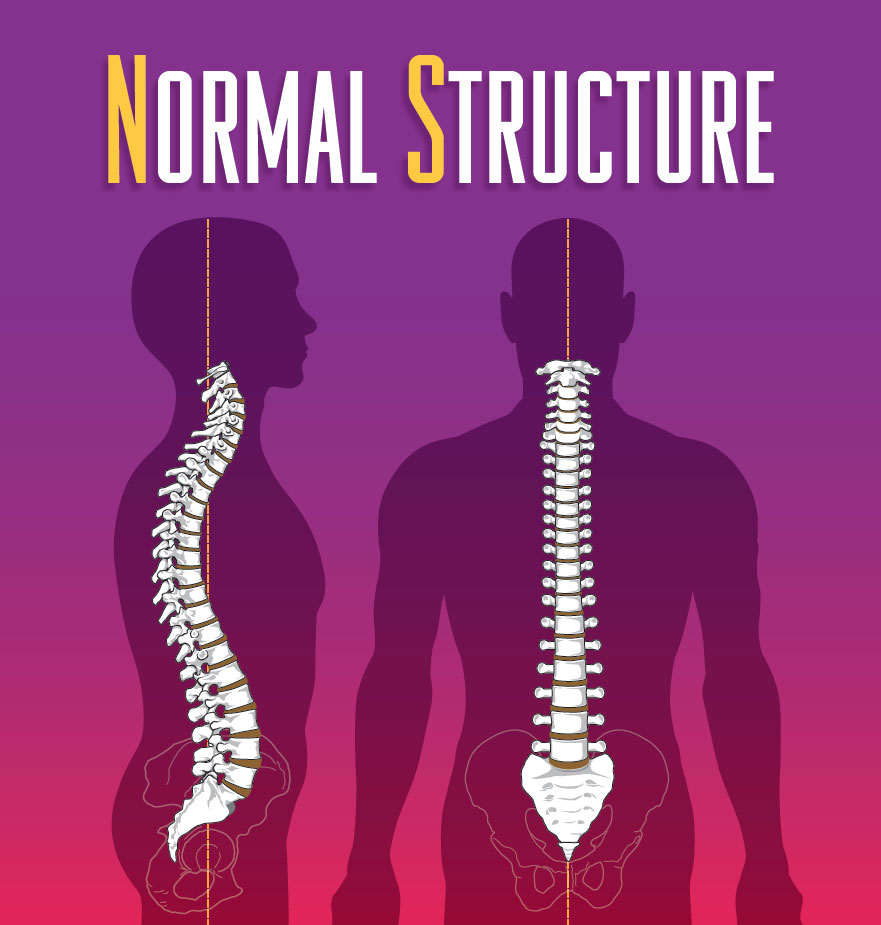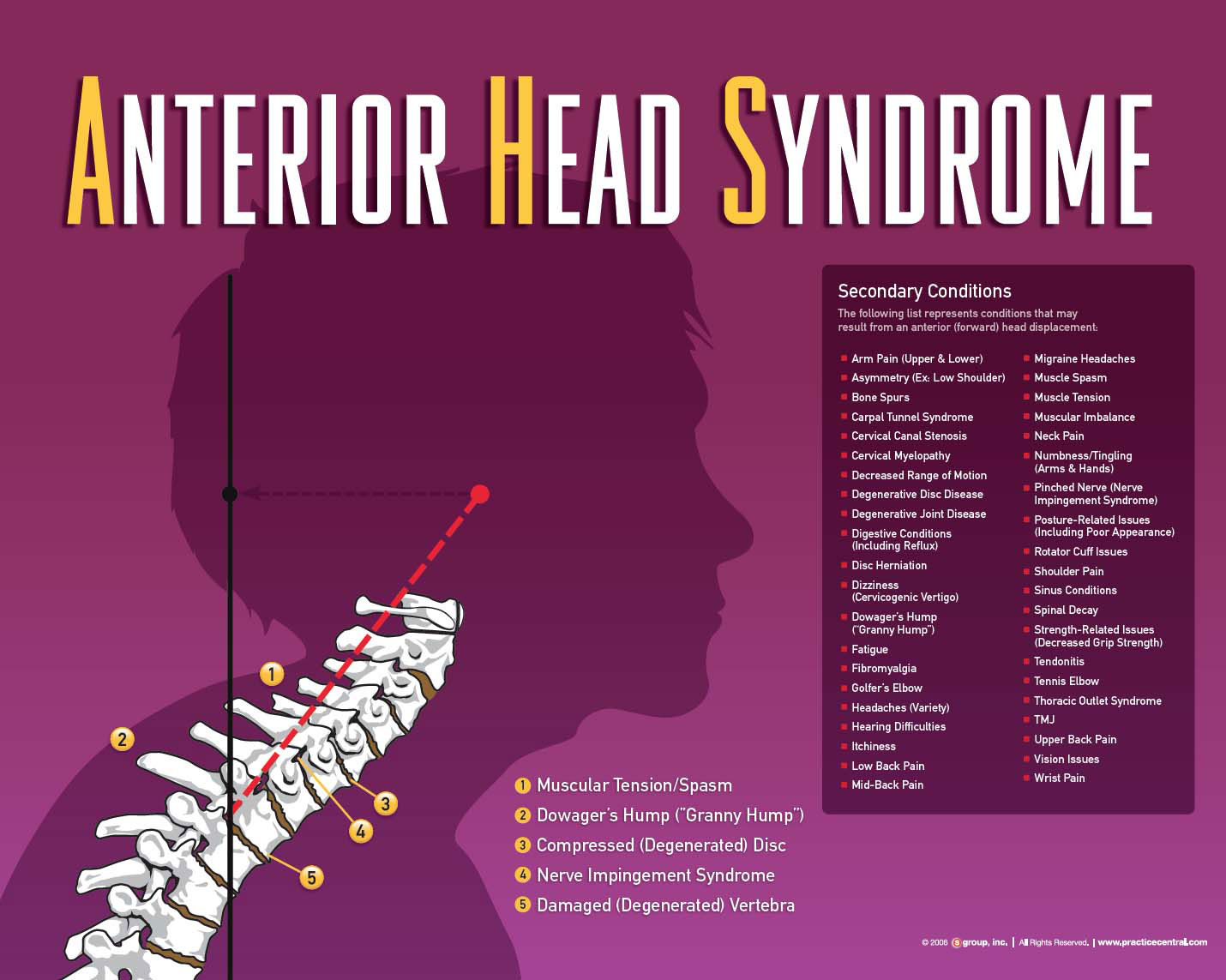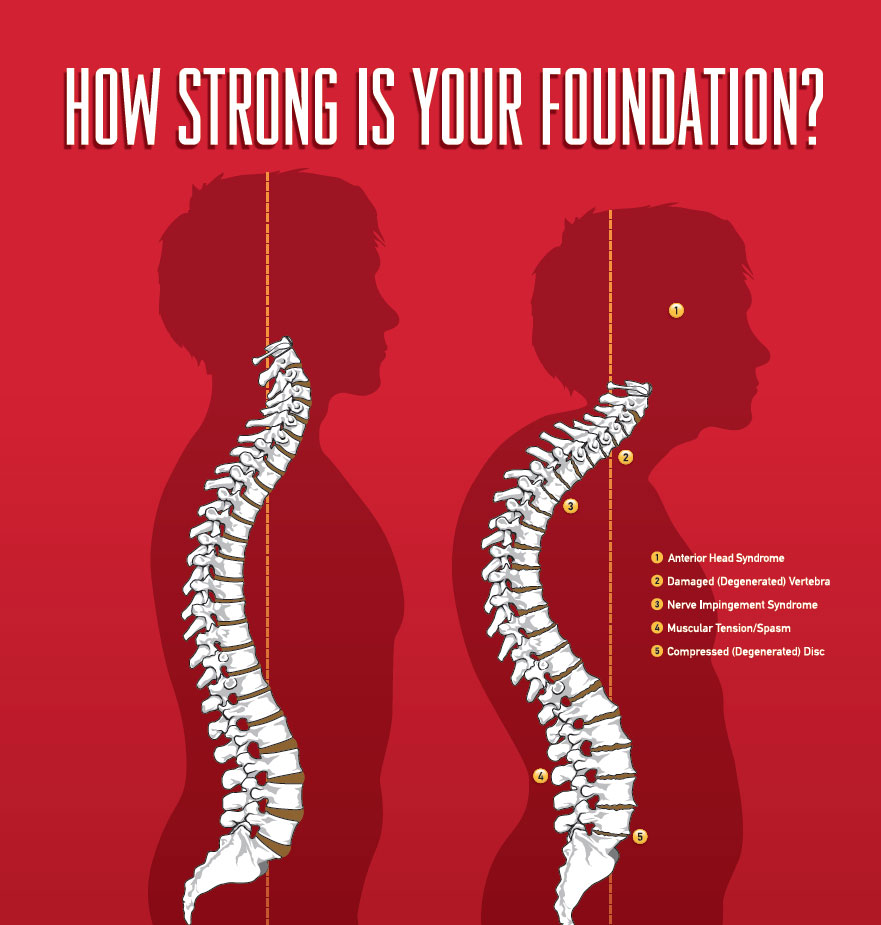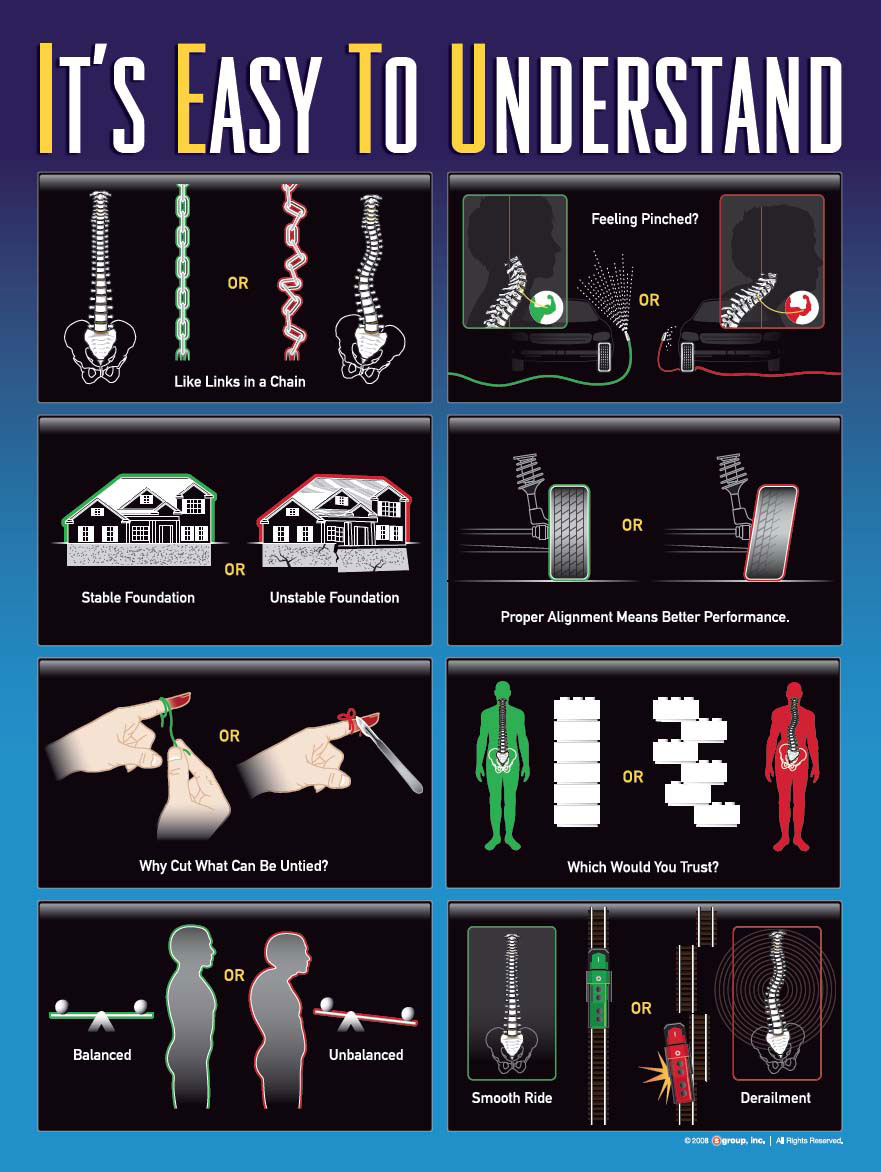Conventional Chiropractic
Conventional chiropractors focus on symptoms or secondary conditions. Their primary goals are to provide temporary pain relief. These goals are good, and there are many chiropractors who provide conventional chiropractic in the area.
Structural Correction Chiropractic
Instead of patching a condition, we want to fix or correct the underlying cause of your symptoms by
addressing the foundation of your body. The foundation of your body is the spine.
Structural Correction is unlike conventional chiropractic
because we are creating optimal spinal structure through spinal alignment and stability. We are fixing not
patching the problem. Optimal spinal structure is important because many symptoms are a result of a
structural shift.

What is a Structural Shift
A Structural Shift is a spinal segment that shifts from a normal range. If your spinal segments shift,
you’ll experience secondary conditions or symptoms. There's a normal range for blood pressure just like there's
a normal range for spinal alignment.
Structural shifts can cause an array of different secondary conditions or symptoms. Structural shifts stem from
daily challenges to our spine: bad posture, playing sports, poor workplace ergonomics, pregnancy, working-out, and
stress.
Even newborns are susceptible to structural shifts which can cause colic, ear infections, and generalized stress.

What are Secondary Conditions?
Secondary conditions are a result of a Structural Shift. Once a spinal segment has shifted from its norm; the result is dysfunction of muscles, tendons, ligaments, discs and nerves.
Like a satellite signal communicates with your TV, a spinal nerve can get blocked by a Structural Shift causing secondary conditions. Poor nerve communication leads to body dysfunction.
Common Secondary Conditions
- numbness and tingling arms legs
- migraines and headaches
- pinched nerve
- herniated disc
- canal stenosis
- degenerative joint disease
- sciatica
- dizziness
- asthma/ allergies
- colic/reflux
- ear infections
- pregnancy related pain.

What Do I Need To Know Before My Examination?
Patients start with a complimentary consultation. This is an enlightening chat about the ins and outs of our office. If what we say sounds reasonable, we have time set aside to move the structural exam.
What Does The Structural Exam Include
The examination includes Structural Radiographs, Digital Assessment, Structural Analysis, and
orthopedic or neurologic tests. The examination is detailed and comprehensive. The results of
your exam will determine if you are a candidate for Structural Correction care.
Examination attire will be needed in order to provide optimal exam data. Please wear form fitting,
gym clothing. Refrain from wearing jewelry or necklaces.
Why Do We Perform An Exam?
It’s the same reason an optometrist checks your eyes before changing a glasses prescription. In order to provide optimal patient care, we need exam data to come up with a comprehensive plan of care. Furthermore, we are able to rule out possible sinister conditions.

What Are The Treatment Options?
If the structural examination shows indicators of a structural shift, we will provide a detailed
and customized plan of care to address the problem.
Conventional treatment options vary depending upon the patient’s secondary conditions. Typically, if a
patient is experiencing pain, the first option would be medication. If medication does not
provide temporary relief, the patient will be sent to a physical therapist who will work on
muscle range of motion. After physical therapy, injections are usually the next step. Injections
will block the nerve from producing pain. The last resort is usually more invasive procedures like
surgery.
We work with many health care providers in order to help the patient satisfy their needs.

What Can Core Chiropractic Do For Me?
If indicators of a Structural Shift are present, we will utilize Structural Correction Chiropractic
in order to guide the spine to a more normal position. Our goal is to fix the condition in the shortest
amount of time possible.
We don't use heavy force, high velocity manipulations to the spine.
Instead, we utilize gentle, precise corrections and structural recommendations
to greatly improve a patient’s secondary conditions.
